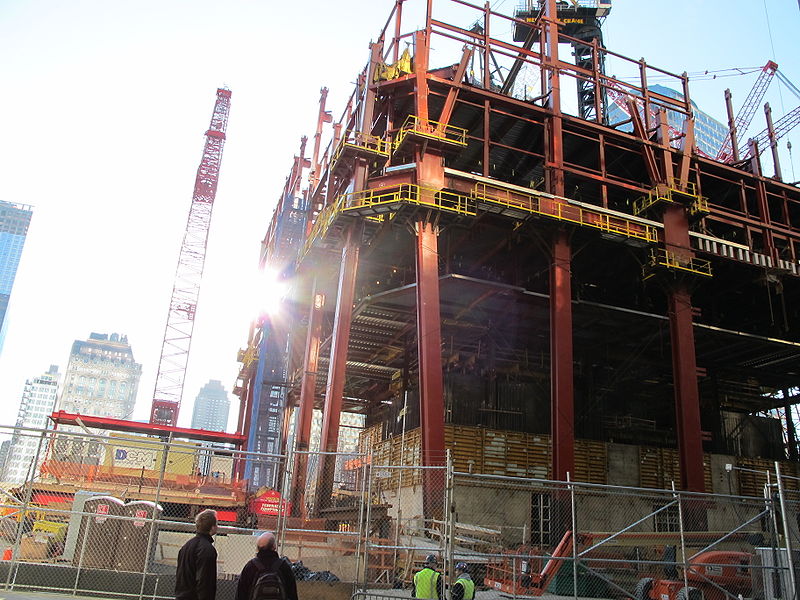
Manhattan Construction Site (Photo: wiki Sterilgut assistentin CC BY SA-3.0)
Aug. 13, 2019 By Christian Murray
A Long Island City-based crane operator has been ordered by the city to halt work at 22 construction sites after being held responsible for two major mishaps in Manhattan this year–one causing the death of a construction worker.
United Crane and Rigging, located at 11-14 35 Ave., has been ordered by the Department of Buildings to stop work until it replaces the personnel who supervised the crane work at a NYCHA site in the East Village on July 31 where a crane operator lost a load. The company is also required to replace the supervisor(s) at the other 21 sites.
The company, according to the DOB, was also involved in a fatal accident on April 13 at 570 Broome St., in which the counterweight of a crane fell to the ground and killed a worker. The construction worker was identified as Gregory Echevarria, 34, who was a father of four and a war veteran.The incident is still under investigation.
The DOB which issued the order yesterday was prompted by an incident at a NYCHA building at 749 FDR Drive. A DOB investigation determined that a crane operator was lifting a load of more than 4,400 pounds, which exceeded the crane’s capacity of 3,700 pounds, causing the boom to bend and partially collapse. The operator lost control of the load, which then struck the roof and side of the building before falling to the ground.
Five violations to United Crane and Rigging that carries penalties of $110,000 each was issued by the DOB. The violations include failure to designate a qualified and competent Lift Director; failure to make proper notifications to DOB regarding the work that was being performed; inadequate safety measures on site; failure to safeguard the construction site to protect workers and the public; and failure to have proper construction documents on site.
The company is required to provide the names of the replacement workers—such as its licensed engineer, lift director, assembly and disassembly director and hoisting machine operator.
To resume work, the company must also hire an independent monitor who will provide DOB with monthly safety-compliance reports.
One of the sites where the operator has been forced to stop work is in Queens Plaza. The company has been working at Tishman Speyer’s 28-07 Jackson Avenue office tower known as the JACX.
2 Comments

Deblasio’s soft-on-crane policies did this
There are no soft crane policies in NYC…Just a few bad actors. All responsible persons need to do their jobs. When the lift director or rigger gives the load weight the crane operator can see the actual weight ,alarms sound and the pick not made. Another contributing factor is overworked workers. How many continuous hours is too many? It’s not the Mayor or the DOB…it’s greed..